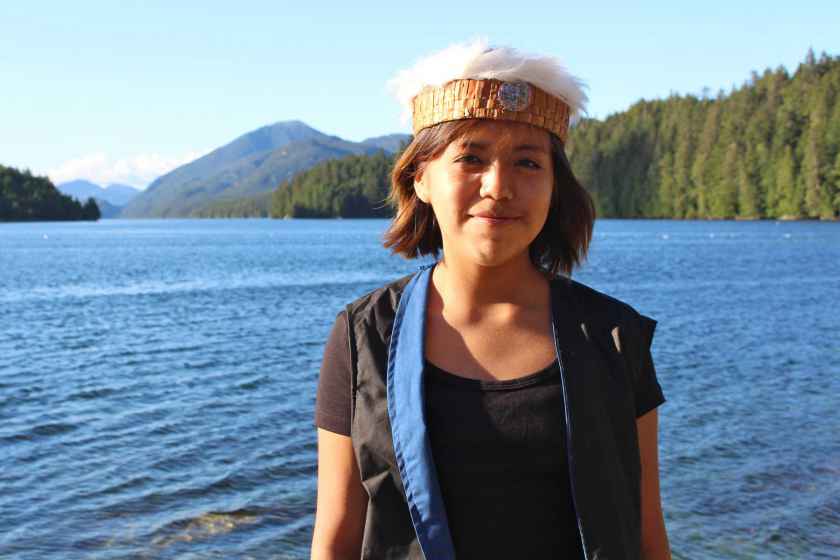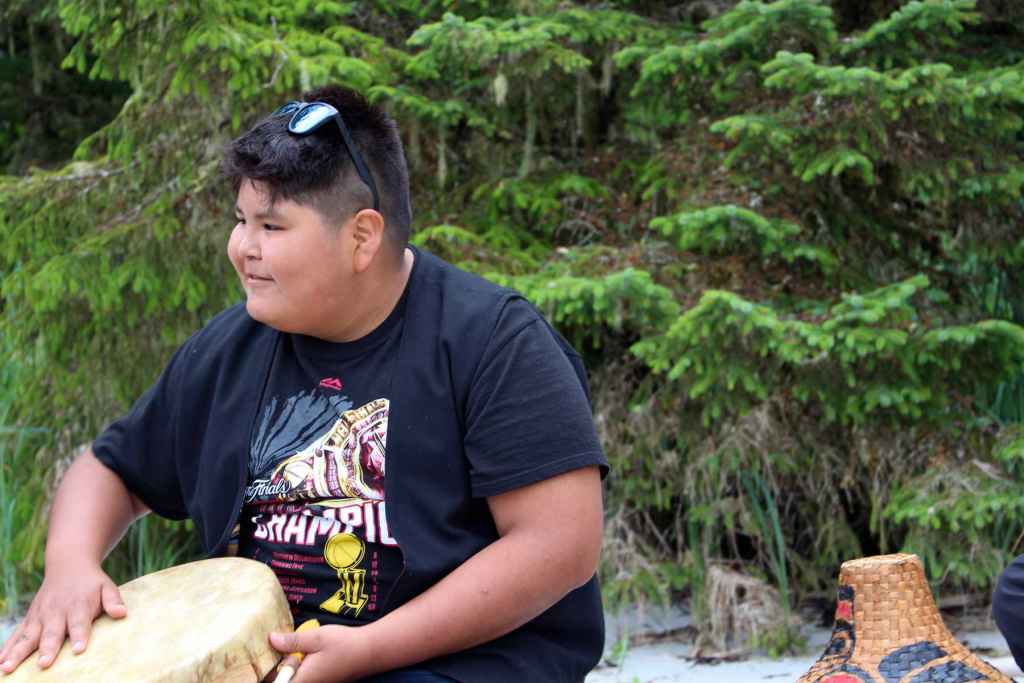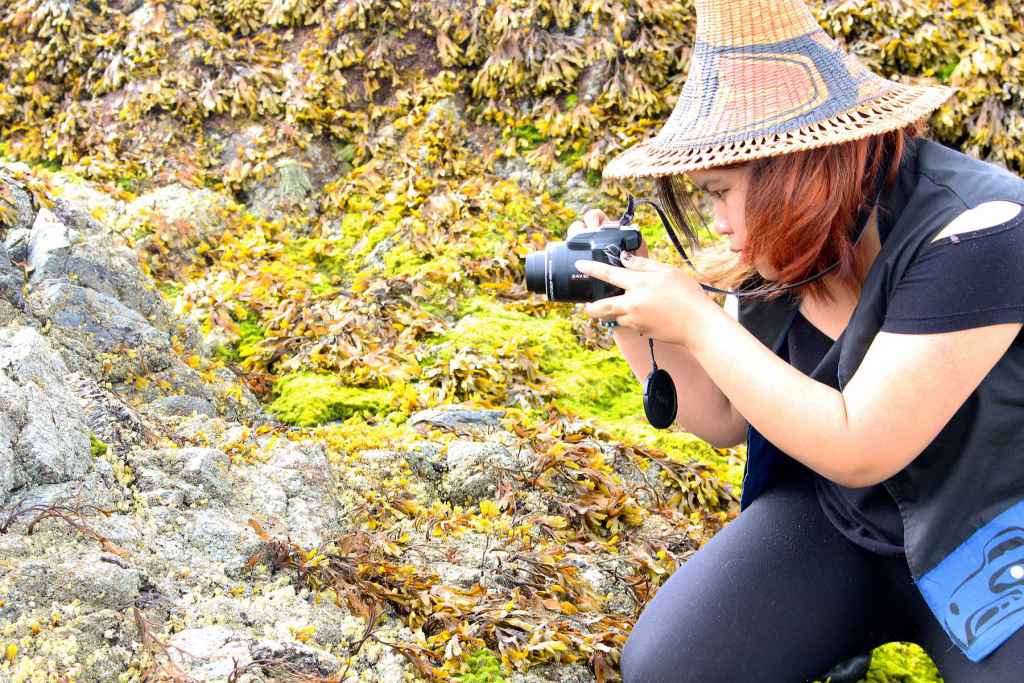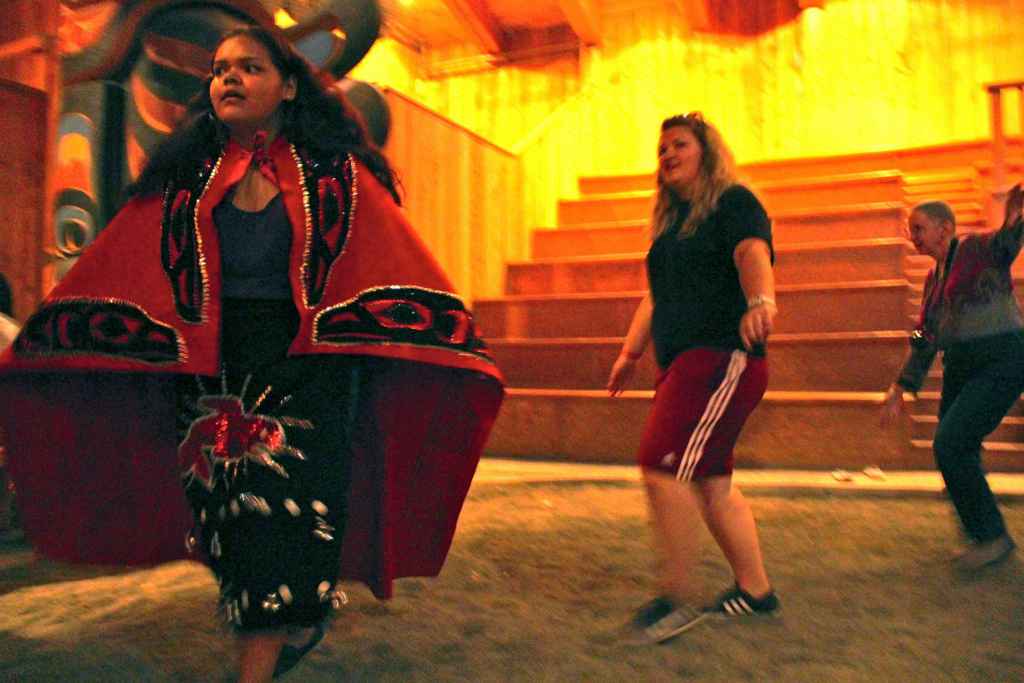Estimated Reading time

4 Mins
Kitasoo / Xai’xais Cultural Youth Program Builds Young Ambassadors for the Nation

Rediscovering their Culture
Now in its second year of programming, the Súa Youth Program was developed to make a safe space for young people to revitalize their connection to their culture while learning skills that will help them in school and employment. Over the summer, five Youth Cultural Ambassadors between ages 12 – 17 participated in the program.

“We place a great emphasis on valuing every person in the group,” explains Lisa Hackett, Program Coordinator. “Building self-worth in youth helps them understand the power of their individual voice. Our aim is to encourage these young leaders to use the power of their voice to communicate their passion for their culture.” One young ambassador, Jamie, 12, confirms the power this learning process: “We are strong for regaining our culture.”
We are strong for regaining our culture.
Over the course of the program, the youth ambassadors were taught traditional practices and participated in workshops to build their confidence. They spent the first week with a hereditary chief, Harvey Robinson, making drums in partnership with the SEAS program. They used moose, elk, and deer hides with cedar frames to make personal drums to use at performances.

The participants also selected stories from their nation to memorize and present at performances, and learned vocal projection, physical presence, and connecting with an audience. Vernon Brown, an incoming Kitasoo hereditary chief, explained how he learned to tell stories to visitors in the community and shared local history with the ambassadors to grow their understanding of Klemtu’s past and its affect on the present day.
The Youth Cultural Ambassadors also learned about harvesting native berry species and cedar. For thousands of years the coastal First Nations peoples lived off and in harmony with the land. The Kitasoo/Xai’Xais are no exception and traditional uses of plants for food, craft and medicine are still practiced today.
The process of harvesting, preparing and weaving cedar is an important tradition and the ambassadors learned to craft baskets, pencil cases and headbands over many weeks. They also learned phrases in Sg’uuks (the Kitasoo dialect of Sm’algyax), how to fabricate traditional regalia, and most importantly, were able to visit culturally important sites in the remote areas of their territory.

“A real highlight of the program was a field trip to Dis’ju with the SEAS program,” confirms Hackett. “The youth were granted special permission to enter the historic Big House wearing their regalia to sing and drum. It was by far one of the most powerful moments of the season.” The group arrived at low tide to explore the unique inter-tidal ecosystem of abolone, sea urchins, anemones and seaweed before finally entering the big house. “The spiritual presence was undeniable,” say Hackett. “A sense of pride washed over the group as they entered the arena. We could have stayed there all day.”
Building Ambassadors and Developing Skills
In addition to providing opportunities for Kitasoo/Xai’Xais youth to explore their culture and the traditions of their people, the Súa Youth Cultural Program fosters values such as accountability, respect, and reliability that will help youth be successful at school and in the workplace.

“Since Súa is a youth work experience program, it provides new opportunities for peers to interact on a professional level,” says Hackett. “Ambassadors and other performers begin to understand what acceptable behavior in the workplace looks like and how to communicate with coworkers.” Daily workshops aimed at fostering collaboration and respect within the group of the five Youth Cultural Ambassadors. “They discovered the importance of supporting one another as they take physical and emotional risks in activities such as hiking and storytelling,” says Hackett.

The program also introduces youth to the basic public speaking and performance skills that will bolster their confidence and ability to be ambassadors for their nations. “Sharing my culture helps with self esteem and confidence,” says Eliza, 14.
“By the end of the summer, youth involved in the full-time program come to understand the true meaning of being ambassadors of the Kitasoo/Xai’xais Nation,” says Hackett. “They hold this position with honour and pride and bring those traits into other aspects of their life at the school and in the community.” Jazz, 15, Súa Performer, agrees. “We are doing everything we can to keep our culture alive.”
We are doing everything we can to keep our culture alive.
As a non-profit organization the Súa Youth Cultural Program relies on funding from grants and generous sponsors to continue providing opportunities for enrichment.
> Learn more about the Súa Youth Cultural Program
